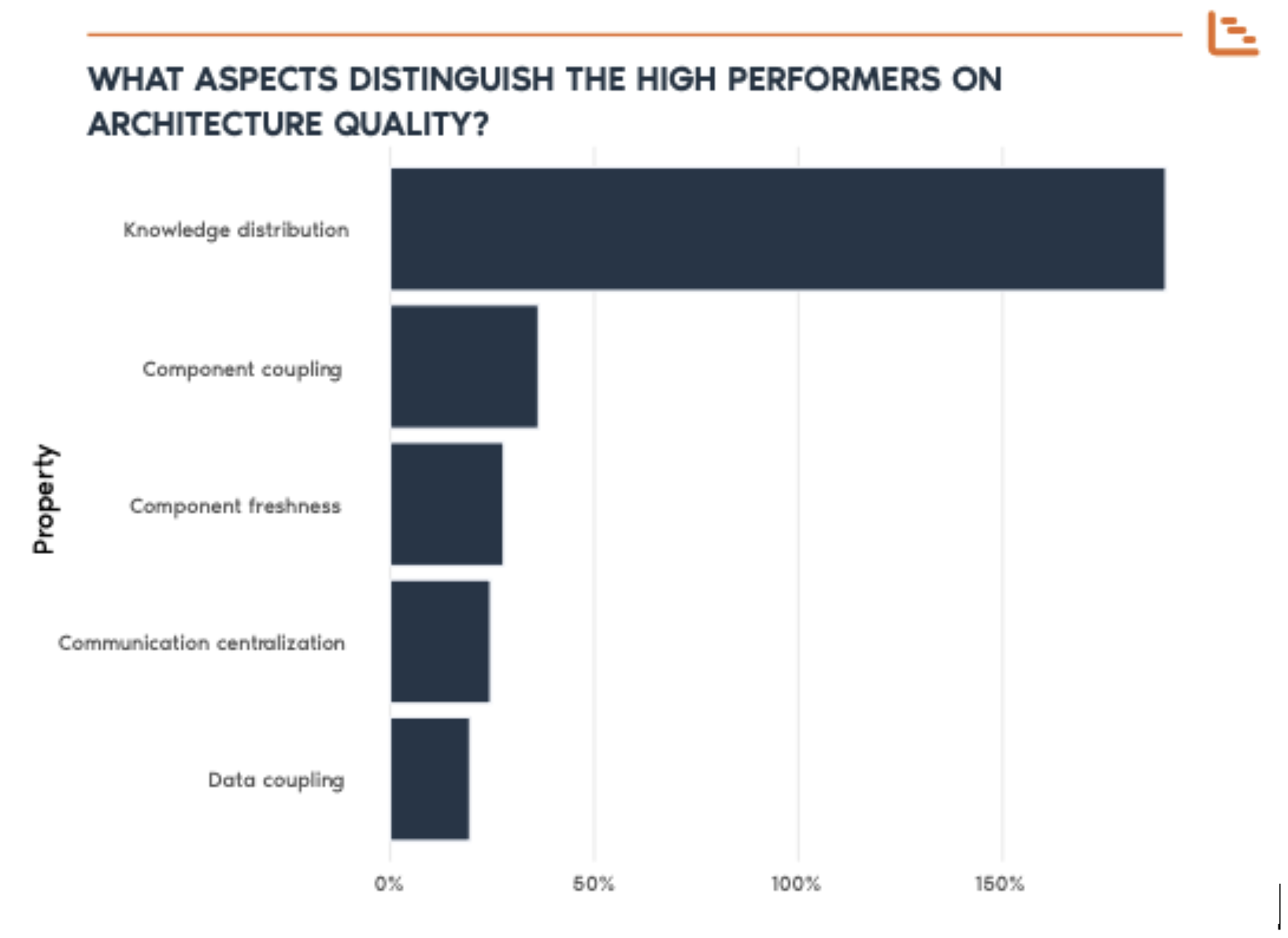
24 July 2024
Request your demo of the Sigrid® | Software Assurance Platform:

5 min read
Written by: Ravish Gopal

Software development teams are the beating heart of innovation and progress. However, even the most experienced teams can find themselves hampered by inefficiencies and bottlenecks that slow the speed of delivery.
In a recent conversation with Ravish Gopal, Director of Delivery for EMEA at Software Improvement Group, we discussed a client project centered around the accessibility of coding knowledge and how critical this is to build a high-performing software engineering team.
Let us first acknowledge that building an effective architecture that enables rapid product delivery for today’s needs, while also addressing long-term goals can be challenging. Many aspects determine the level of quality. However, in our 2023 Benchmark report, we found that knowledge distribution is –by far– the biggest factor in having a high-quality architecture.

Knowledge Distribution indicates the degree to which developers can effectively work in parallel, with a joint knowledge that covers the entire code base: it measures to what extent there is a balanced distribution of development activity across all software components. This means that there are developers with recent knowledge about all parts of the system and that developers do not work too much on the same parts of the code, which is a known source of inefficiencies and bugs.
Ravish Gopal, Director of Delivery for EMEA at Software Improvement Group gave his insight into a specific and related client case.
“So, this was a pretty old codebase and not surprisingly, we found a large amount of technical debt and the code wasn’t in such a good state, it didn’t receive the maintenance love it should have received”
For this client, it was evident that the root cause of this issue lay in the state of the code base itself. Years of prioritizing functional sprints over non-functional work resulted in a significant accumulation of technical debt. According to McKinsey, technical debt is often the culprit behind many product delays, hidden risks, and spiraling costs.
This was compounded by a lack of comprehensive documentation which is especially beneficial for large-scale or complex projects. Software documentation includes crucial details about both the process and the product and bridges the gap between complex code and clear instructions, allowing seamless collaboration and facilitating smooth software implementation. Additionally, insufficient test code coverage was hampering the team’s ability to ensure the reliability, stability, and maintainability of their software.
These three things unintentionally siloed critical knowledge in the minds of their senior developers. Knowledge transfer is an operational necessity and a strategic imperative that directly influences an organization’s success. With purpose it protects the team’s intellectual capital and sustains its competitive edge in an increasingly complex and fast-paced digital landscape.
Recognizing the need for change, the client embarked on a journey of software excellence and aimed to disentangle the web of component dependencies and implement practices that empower developers to work more independently.
Central to this modernization program was the imperative to improve the quality of the codebase, supplementing it with robust test coverage and up-to-date documentation. By codifying essential knowledge and reducing reliance on key individuals, the team could break free from the shackles of inefficiency and boost development productivity.
Removing the bottleneck created by knowledge silos, the client not only improved working relationships by providing a greater degree of transparency into the software quality of their application, but they also laid a solid foundation for future growth and innovation.
Senior developers were unburdened from vetting changes and redirected their energy towards strategic initiatives that drove value for the organization.
This newfound agility enhanced the quality of life for developers but also had tangible business benefits, enabling the organization to pursue new revenue-generating opportunities.
In an era where speed and agility are paramount, addressing knowledge bottlenecks is not just a tactical fix but a strategic imperative.
IT leaders who can foster a culture of software excellence and implement a framework that encourages knowledge-sharing are futureproofing their software development and positioning themselves for long-term success. Building a productive software engineering team begins with a commitment to dismantling barriers and empowering developers to code confidently.
As we look towards the future of software engineering, register for our NEW leading IT Leadership conference, SCOPE 2024. SIG is bringing together some of the brightest minds in software excellence and enterprise IT leaders to share their stories and best practices. We will explore how they are dealing with the increasing complexity of software and the adoption of AI (Artificial Intelligence) as part of their innovation plans.
Author:
Delivery Director, EMEA & APAC

We'll keep you posted on the latest news, events, and publications.